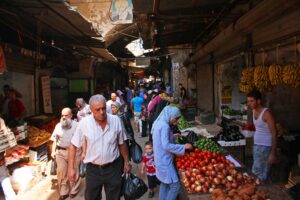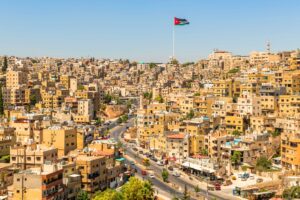Food security, particularly in the context of wheat production and consumption, is a critically important issue for many countries. Wheat is a primary source of nutrition for a significant portion of the global population, being used to produce bread, pasta, and many other food products. In some countries, 800 million people in the world do not have enough food,[i] and any disruption in its production can lead to food shortages and price increases. Additionally, wheat production plays a crucial role in the economy, providing jobs for millions of people, from farmers to workers in processing plants and logistics companies. A decrease in wheat yield can negatively impact the economies of entire regions. In light of this, the establishment of a BRICS grain exchange gains particular significance. The creation of such an exchange is driven by economic and strategic reasons. Currently, grain price indices are predominantly formed in the USA and Europe, which unfairly influences price formation from the perspective of BRICS countries that produce significantly more grain. Establishing their own exchange will allow BRICS countries to set new price indicators, reducing dependence on Western exchanges and protecting their economies from external shocks.
The proposal to create a grain exchange was put forward by Eduard Zernin, Chairman of the Board of the Grain Exporters Union, and submitted to the Ministry of Agriculture within the framework of Russia’s BRICS presidency in 2024. On 5th March 2023, Russian President Vladimir Putin supported the proposal during a meeting with agricultural producers. Russia presented this initiative to its BRICS colleagues according to a press release from Roscongress[ii] following the first meeting of the BRICS Agriculture Working Group[iii], held via videoconference. Furthermore, a conference on food security and sustainable agricultural development took place in late June in Moscow. Foreign partners positively evaluated Russia’s initiatives and emphasized the importance of strengthening multilateral cooperation in agriculture. Zernin noted that while the discussion of the grain exchange project has begun on the BRICS platform, and the final decision will depend on the political authorities of its member countries.[iv]
BRICS countries [...] cannot fully participate in price formation for important products such as wheat, barley, and corn.
President Putin endorsed the idea of creating a BRICS grain exchange during a meeting with representatives of the agro-industrial complex of the Stavropol Territory in March, calling it promising. The Grain Exporters Union outlined this initiative in a letter to the Ministry of Agriculture in December last year, emphasizing that the modern infrastructure of the global grain market was established after World War II with the dominance of US supplies. Grain prices used by BRICS countries are formed based on data from the Chicago Mercantile Exchange (CME), with settlements in US dollars. The Union notes that BRICS countries, despite being key participants in the global grain market, cannot fully participate in price formation for important products such as wheat, barley, and corn, making the creation of a unified BRICS trade and clearing infrastructure necessary.[v]
Russia has significant experience in creating high-tech and reliable exchange trading and clearing platforms, which can be utilized in establishing the BRICS grain exchange. In 2023, BRICS countries produced 1.17 billion tons of grains (42% of global production) and consumed 1.1 billion tons (40% of global consumption).[vi] With the expansion of BRICS membership in 2024, including the joining of Egypt, Iran, Saudi Arabia and the United Arab Emirates, grain production will reach 1.24 billion tons (44% of global production), and consumption will grow to 1.23 billion tons (44%).[vii]
In Russia, the creation of a BRICS grain exchange is seen as a way to challenge the Western world order.
The idea of regulating agricultural product prices within BRICS is of significant interest; however, successful implementation requires not just an exchange platform but also an industry union similar to OPEC. Theoretically, BRICS countries have enough potential to become an OPEC analog. After the expansion of BRICS, these indicators will reach 1.24 billion tons of production and 1.23 billion tons of consumption.[viii] However, analysts point out that unlike OPEC, most BRICS countries are net importers of grain. Only Russia and Brazil hold significant shares of the global grain market and can potentially benefit from price regulation. In Russia, the creation of a BRICS grain exchange is seen as a way to challenge the Western world order, similar to how OPEC challenged the oligopoly of Anglo-American oil companies in the 1960s.[ix]
Currently, Russia accounts for a quarter of the world’s grain exports, with global prices set by Western exchanges like the US CME Group and the French MATIF, while supplies are controlled by major European and American traders such as Cargill and Viterra. Organizational issues are likely to be resolved by the planned BRICS summit in Kazan this year.
The grain exchange would help reduce the influence of Western institutions in trade between Russia and its main grain importers. Moscow’s primary markets are Turkey, Egypt, and Iran, with increased supplies to Algeria, Indonesia, and Bangladesh. If the BRICS exchange attracts significant grain volumes, it can become a testing bridge connecting the emerging BRICS trading and currency infrastructure too.
In October 2023, the Russian grain export company Food Export Trade signed a $26 billion contract to supply China with 70 million tons of grain, legumes, and oilseeds over the next 12 years.[x] According to this agreement, Russia plans to expand grain production in Siberia, the Urals, and the Far East—regions where agriculture is less developed than in the European part of the country. The idea of selling grain to foreign buyers for rubles has been maturing in Russian state structures for a long time, and with BRICS, this can become a reality.[xi]
At a recent government meeting, Elvira Nabiullina, head of the Central Bank of Russia, reported that the share of transactions between Russia and BRICS countries conducted in national currencies has tripled, reaching 85%.[xii] Nabiullina also noted that Moscow is actively participating in discussions on the potential integration of national payment infrastructures with other BRICS members to further facilitate trade. Creating such an exchange in the current geopolitical conditions is most necessary for Russia, which faces external constraints and accounts for 22% of the world’s grain exports. Russian analysts believe that the future of projects like the BRICS grain exchange will largely depend on the relations between China and Western countries. The Kremlin has tasked Prime Minister Mikhail Mishustin and Central Bank President Elvira Nabiullina with presenting proposals by 1st July.[xiii]
Food security is a key factor in achieving Sustainable Development Goals (SDGs) 1 and 2, aimed at eliminating poverty and hunger worldwide. Ensuring the availability and quality of food directly impacts improving the standard of living, reducing poverty levels, and providing adequate nutrition for all social groups. In the context of Russia’s national security, food security acquires strategic significance, as stable and sustainable food supply contributes to social and economic stability, preventing potential crises caused by resource shortages. Thus, strengthening food security is an integral part of comprehensive sustainable development as well as national security policies.
[i] Awareness Days (2024). “World Hunger Day 2024”, 28 May 2024, retrieved from: https://www.awarenessdays.com/awareness-days-calendar/world-hunger-day-2024/.
[ii] Roscongress (2024). “BRICS Ministers of Justice Meeting Postponed”, 25 June 2024, retrieved from:https://roscongress.org/en/news/o-perenose-soveschanija-ministrov-justitsii-stran-briks/.
[iii] Interfax (2024). “Putin supported the proposal to create a BRICS grain exchange”, 5 March 2024, retrieved from: https://www.interfax.ru/russia/949106.
[iv] Agroinvestor (2024). “The creation of a BRICS grain exchange may take several years”, 28 June 2024, retrieved from: https://www.agroinvestor.ru/markets/news/42536-sozdanie-zernovoy-birzhi-briks-mozhet-zanyat-neskolko-let/.
[v] Interfax (2024). “Putin supported the proposal to create a BRICS grain exchange”.
[vi]Logisticos (2024). “BRICS countries may create their own grain exchange”, retrieved from: https://logisticos.org/news/2024/03/6625.
[vii] TASS (2024). “Russia’s trade turnover with BRICS countries increased to $294 billion in 2023”, 2 April 2024, retrieved from: https://tass.ru/ekonomika/20417853.
[viii] Oreanda News (2024). “Russia has submitted a proposal to the BRICS countries to create a grain exchange”, 18 April 2024, retrieved from: https://www.oreanda-news.com/en/gosudarstvo/russia-has-submitted-a-proposal-to-the-brics-countries-to-create-a-grain-exchange/article1511871/.
[ix] Lakstygal, I. (2023). “BRICS is ready to become a self-sufficient grain market after expansion”, Vedomosti, 29 December 2023, retrieved from: https://www.vedomosti.ru/politics/articles/2023/12/29/1013507-briks-posle-rasshireniya-gotova-stat-samodostatochnim-rinkom-zerna.
[x] World Grain (2023). “Russian, China expand agricultural trade”, 11 August 2023, retrieved from: https://www.world-grain.com/articles/19248-russia-china-expand-agricultural-trade.
[xi] Tass (2023). “Russian and China signed the largest contract for the supply of grain”, 17 October 2023, retrieved from: https://tass.ru/ekonomika/19042473.
[xii] Interfax (2024). “Russia presented a proposal to the BRICS countries to create a grain exchange”, 18 April 2024, retrieved from: https://www.interfax.ru/russia/956593.
[xiii] Vedomosti (2024). “Russia and BRICS have increased the share of settlements in national currencies to 85%”, 30 January 2024, retrieved from: https://www.vedomosti.ru/economics/news/2024/01/30/1017420-rossiya-rossiya-i-briks-uvelichili.

















